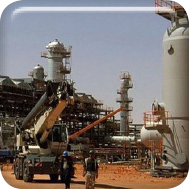| Customer: | Thames Water |
| Project: | Acton Storm Pumping Station Upgrade |
| Location: | Acton, West London |
| Products: | 6 x Jerome J605 Gold Film Hydrogen Sulphide Analysers in Environmental Housings |
Prompted by regular odour complaints from local residents, in 2014 Thames Water embarked upon a project to upgrade the storm tank cleaning system at Acton Storm Pumping Station. This involved renovating the Amajet cleaning units in the tanks in an attempt to reduce odours emanating from the site. Units with larger, more powerful motors were installed in four of the storm tanks aimed at preventing solids build-up on drain down and jet washing points were fitted for easy wash down.
To assist with rapid, accurate odour detection at the works perimeter, Thames Water have purchased six of the industry proven Jerome J605 Hydrogen Sulphide Analysers. Following the model successfully deployed by Thames at their Mogden site, the analysers will be installed in environmental housings along the fence line for reliable parts per billion (ppb) level nuisance odour measurement and reporting.
Another major factor in the upgrade was the implementation of an automated control system to control the filling of the storm tanks and speed up the drain down process. Monitors were installed in the local sewers so that the tanks would automatically drain down when the sewer levels were suitable for the storm flows to be returned to same. The objective of the upgrade project was to reduce odour levels, characterised by the classic “rotten egg” smell of hydrogen sulphide, over which the London Borough of Hammersmith & Fulham had raised complaints. Work continued throughout 2015 with the performance of the automated control system being tested during storm conditions. Whilst is was acknowledged that it would be impossible to eradicate all odour from a sewage pumping station, and one that forms a key operational part of London’s sewage processing network, the aim was to reduce them to single digit ppb levels, at which they are undetectable to the majority of humans. However, due to persistent technical problems with the automated cleaning system, odour complaints from the local population continue to be received, causing Hammersmith & Fulham Council to serve Thames Water with a recent legal notice of improvement. In response Thames Water has said it had already invested more than £2.5m to improve the tank cleaning equipment to help reduce the odour, and it was always looking at ways to improve the network and would continue to do so and work with residents and the council. Thames Water has identified Acton Storm Tanks as part of its proposed Thames Tideway Tunnel or “Super Sewer” which has recently been given the go-ahead.


